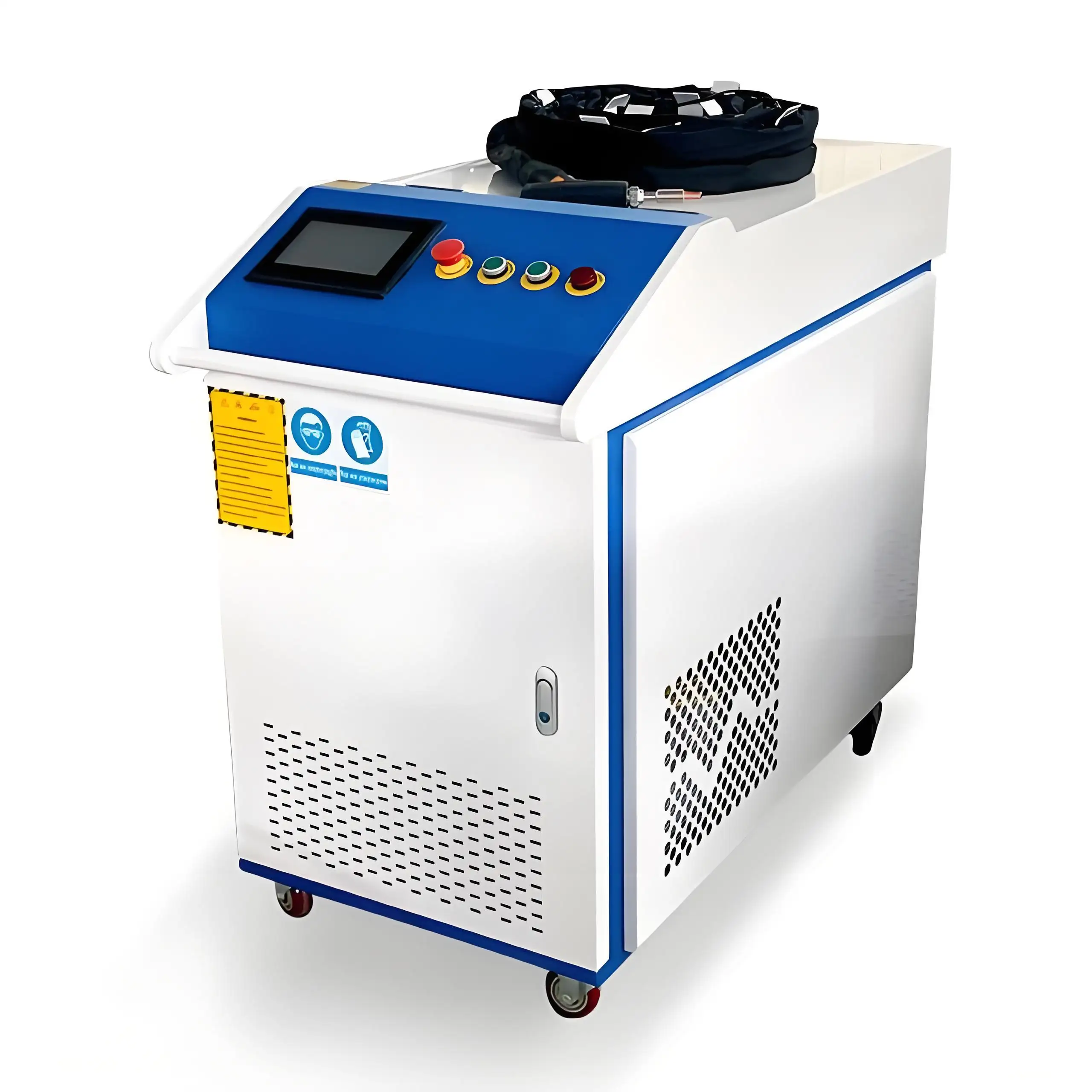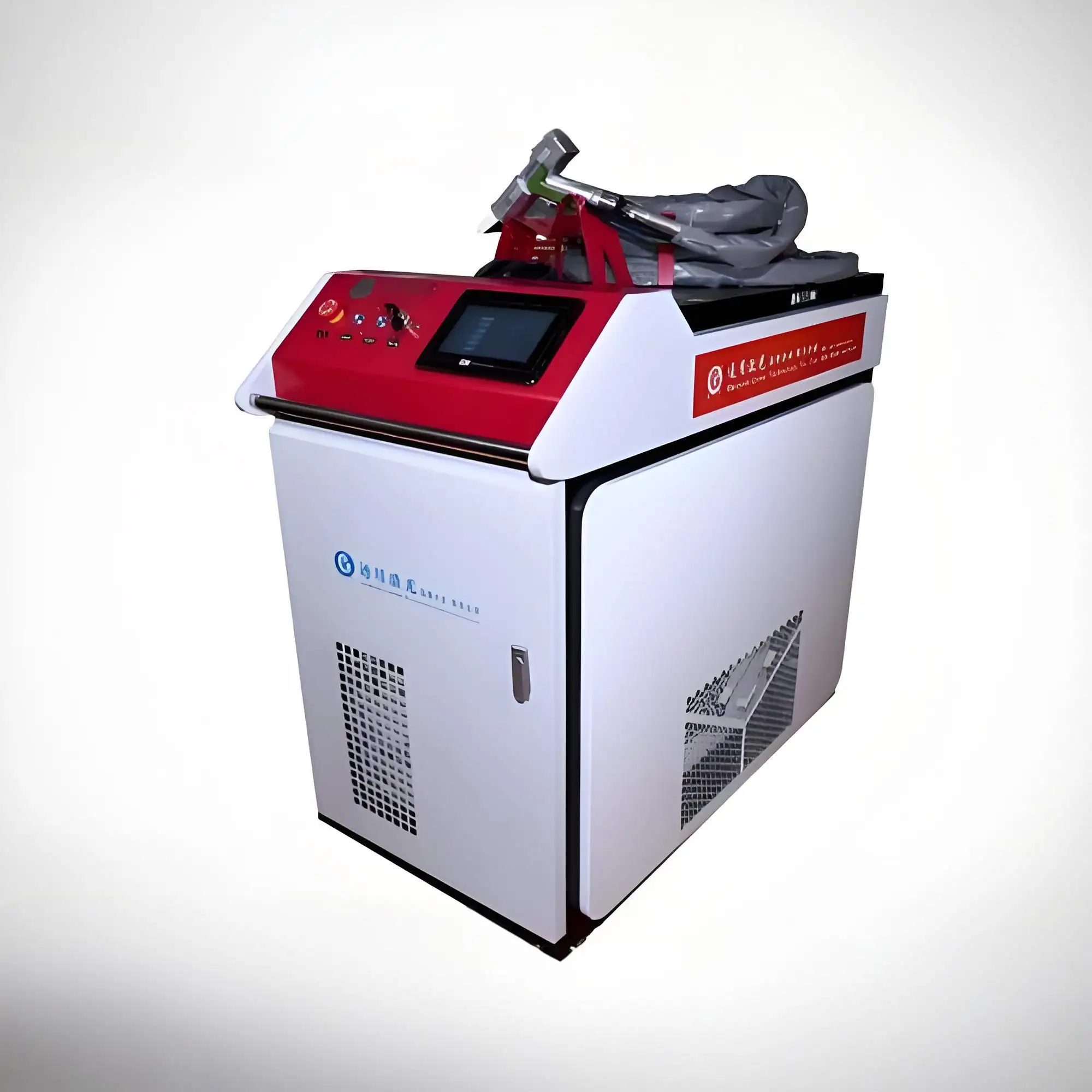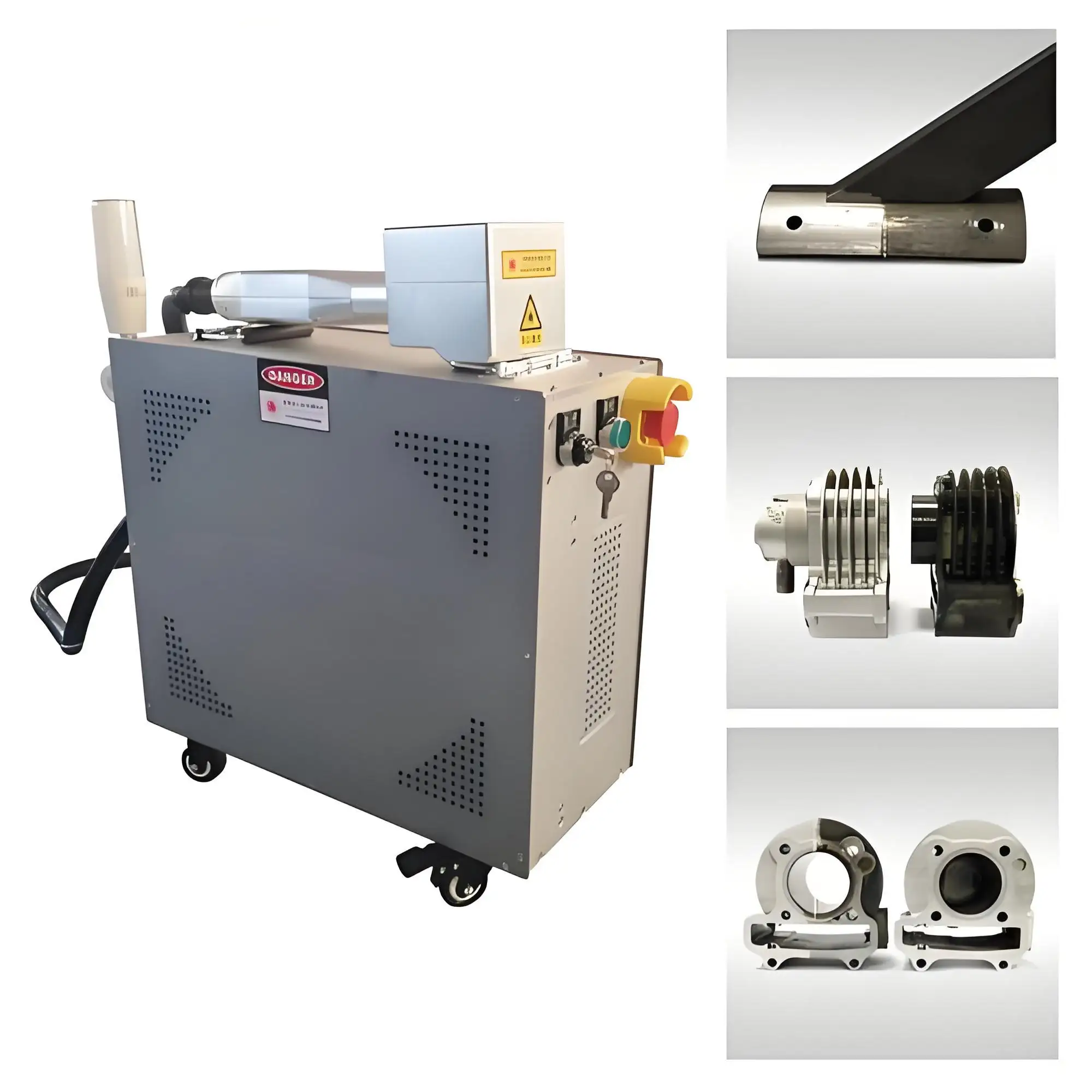As someone who’s been knee-deep in industrial surface cleaning for over a dozen years, I’ve seen the evolution of rust removal technologies firsthand. From gritty sandblasting to the precision of laser systems, I’ve worked with them all, and laser rust removal has become a standout for its clean, efficient results. But when it comes to cast iron surfaces, a material known for its durability yet tricky porosity, many folks ask me whether laser rust removal really delivers. If you’re wondering about its effectiveness, potential challenges, and how to get the best results on cast iron, let me share my experiences and practical tips to help you make informed decisions.

Why Cast Iron Poses Unique Challenges
Cast iron is a workhorse material—think heavy machinery, engine blocks, or vintage cookware. Its high carbon content makes it strong but also prone to rust when exposed to moisture. Unlike smoother metals like stainless steel, cast iron has a porous, textured surface that can trap rust deep within its microstructure. This makes rust removal trickier, as traditional methods like wire brushing or chemical treatments often leave residue or damage the surface.
Laser rust removal, which uses focused laser beams to vaporize rust and contaminants, sounds like a perfect fit for cast iron’s tough nature. But does it live up to the hype? In my years working with machines from brands like CleanLASE and P-Laser, I’ve found the answer is a resounding yes, with some caveats. Let’s dive into how it works, its effectiveness, and what you need to know to achieve optimal results.
How Laser Rust Removal Works on Cast Iron
Laser rust removal operates by directing a high-energy laser beam at the surface, where it heats and ablates rust, oxides, or coatings without physically touching the material. The process is non-contact, meaning no abrasive media or chemicals are involved, which is a big plus for preserving cast iron’s integrity. The laser’s energy vaporizes rust, leaving behind a clean surface—or at least, that’s the goal.
On cast iron, the laser’s effectiveness depends on several factors:
Rust Severity: Light surface rust is easier to remove than deep, pitted corrosion.
Laser Power: Higher-powered lasers (e.g., 500W–1,000W) tackle thicker rust better but require careful calibration to avoid surface damage.
Surface Texture: Cast iron’s porosity can hide rust in tiny crevices, requiring precise laser settings.
Operator Skill: Proper technique ensures the laser removes rust without overheating the cast iron.
In my experience, laser rust removal shines on cast iron when set up correctly, but it’s not a one-size-fits-all solution. Let’s explore its effectiveness in different scenarios.
Effectiveness on Cast Iron: Real-World Observations
Having used laser rust removal on everything from antique cast iron pans to industrial engine components, I’ve seen its strengths and limitations up close. Here’s how it performs on cast iron surfaces:
1. Light to Moderate Surface Rust
For cast iron with light to moderate rust—say, a skillet left in a damp basement or a machine part with surface oxidation—laser rust removal is incredibly effective. The laser quickly zaps away the rust layer, leaving a clean, slightly textured surface ready for seasoning or coating. I once restored a 19th-century cast iron skillet for a client using a 200W CleanLASE unit. In under 10 minutes, the rust was gone, and the skillet’s original grain was intact, ready for a new layer of seasoning.
Advantages: Fast, precise, and no residue. The non-contact nature preserves the cast iron’s surface texture.
Challenges: None, really. Light rust is the ideal scenario for laser cleaning.

2. Heavy Rust and Pitting
For heavily rusted cast iron with deep pitting, laser rust removal can still work but requires more effort. The laser can remove surface rust and some deeper corrosion, but rust trapped in pits may need multiple passes or higher power settings. In a shipyard project, I used a 1,000W Laserax machine on a rusted cast iron propeller. It took several passes to clean the pitted areas, but the results were far better than sandblasting, which would’ve eroded the surface.
Advantages: Can reach deeper rust than manual methods without damaging the base material.
Challenges: Pitted areas may retain some rust, requiring follow-up treatments like light sanding or chemical neutralizers.
3. Coated or Painted Cast Iron
Cast iron parts, like machinery or railings, often have paint or coatings over rust. Laser rust removal excels here, as it can strip both the coating and underlying rust in one go. I worked on a project restoring cast iron railings coated with decades of paint and rust. A 500W P-Laser unit removed everything cleanly, revealing the original surface without the mess of chemical strippers.
Advantages: Handles multiple layers efficiently, saving time compared to traditional methods.
Challenges: Thick coatings may require higher power or slower scanning speeds, increasing processing time.
4. Antique or Delicate Cast Iron
For antique cast iron, like collectible cookware or decorative pieces, laser rust removal is a godsend when done carefully. The precision allows you to remove rust without altering the item’s patina or fine details. I’ve restored several Griswold skillets for collectors, using a low-power 100W laser to gently clean rust while preserving the cast iron’s character.
Advantages: Non-abrasive, ideal for preserving historical or delicate surfaces.
Challenges: Requires low power and skilled operation to avoid overheating or altering the surface.
Here’s a summary table of laser rust removal effectiveness on cast iron:
| Rust Type | Effectiveness | Best Laser Power | Notes |
|---|---|---|---|
| Light Surface Rust | Excellent | 100–200W | Fast, no surface damage |
| Heavy/Pitted Rust | Good | 500–1,000W | May need multiple passes |
| Coated Surfaces | Excellent | 200–500W | Removes paint and rust |
| Antique Cast Iron | Very Good | 50–100W | Requires low power, skilled operation |
Advantages of Laser Rust Removal on Cast Iron
From my years in the field, here are the key benefits of using laser rust removal on cast iron:
Preserves Surface Integrity: Unlike sandblasting, which can erode cast iron’s texture, lasers are non-abrasive, maintaining the material’s original grain and strength.
No Chemicals or Media: No need for harsh chemicals or abrasive media, making it eco-friendly and reducing cleanup. I’ve found this especially useful in food-safe applications like cookware restoration.
Precision Control: Adjustable power and pulse settings let you tailor the process to the rust level and surface condition. This saved me hours when working on intricate cast iron components.
Minimal Heat Impact: Lasers generate localized heat, so the risk of warping or cracking cast iron is low if used correctly. I’ve never seen thermal damage on properly treated cast iron.

Challenges and Limitations
While laser rust removal is highly effective, it’s not perfect. Here are some challenges I’ve encountered:
Porosity Issues: Cast iron’s porous surface can trap rust in microscopic voids, which lasers may struggle to fully remove. In these cases, I follow up with a light wire brush or neutralizer.
Deep Pitting: Severe pitting may require multiple laser passes or supplementary methods, as the laser can’t always reach the bottom of deep craters.
Operator Skill: Incorrect settings, like too high a power, can overheat the surface, creating a slightly discolored or hardened layer. I learned this early on when I accidentally “glazed” a cast iron part with a 500W laser—lesson learned.
Cost: Laser machines are expensive, with prices ranging from $10,000 to $100,000. For small shops, renting or outsourcing may be more practical than owning.
Best Practices for Optimal Results
To get the best results on cast iron, here’s my tried-and-true approach based on years of trial and error:
Choose the Right Laser Power: For light rust, a 100–200W laser is sufficient. For heavy rust or coatings, go for 500W or higher. Always start with the lowest effective power to avoid surface damage.
Adjust Pulse Frequency: Higher frequencies (e.g., 20–50 kHz) work better for light rust, while lower frequencies (5–10 kHz) are ideal for thicker layers. I tweak these settings based on the rust’s appearance.
Clean the Surface First: Remove loose debris or grease with a dry cloth or degreaser before lasering. This prevents contaminants from baking onto the surface.
Use Proper Technique: Move the laser gun steadily, keeping it at the recommended distance (usually 4–8 inches). Overlapping passes ensure even cleaning. I practice on a scrap piece first to dial in the settings.
Protect the Optics: Dust from rust removal can contaminate the laser’s lens. I use an air-purge system or clean the lens daily to extend its life.
Post-Treatment: After lasering, apply a rust inhibitor or seasoning (for cookware) to prevent re-rusting. I’ve found linseed oil works wonders on restored skillets.

Comparing Laser Rust Removal to Other Methods
To give you context, here’s how laser rust removal stacks up against traditional methods for cast iron:
| Method | Effectiveness on Cast Iron | Pros | Cons |
|---|---|---|---|
| Laser Rust Removal | High | Non-abrasive, precise, eco-friendly | High cost, requires skill |
| Sandblasting | Moderate | Fast, effective for heavy rust | Erodes surface, messy |
| Wire Brushing | Low to Moderate | Cheap, accessible | Labor-intensive, scratches surface |
| Chemical Strippers | Moderate | Good for deep rust | Hazardous, requires disposal |
In my work, I’ve found lasers outperform other methods for most cast iron applications, especially when surface preservation is critical. Sandblasting, for example, left a client’s cast iron machinery with a rougher texture, while lasers kept it smooth and intact.
Real-World Examples
One of my favorite projects was restoring a rusted cast iron engine block for a vintage car enthusiast. The block had moderate rust and some grease buildup. Using a 200W CleanLASE unit, I cleaned it in about 30 minutes, revealing a pristine surface ready for machining. The client was thrilled, as sandblasting would’ve risked damaging the block’s tolerances.
Another time, I tackled a set of cast iron railings at a historic building. The railings had layers of paint and rust, and the client wanted to preserve their ornate details. A 500W P-Laser unit stripped everything cleanly, and we followed up with a protective coating. The results were stunning, and the building manager avoided the mess of chemical strippers.
These experiences taught me that laser rust removal can transform cast iron surfaces when done right, but success hinges on proper equipment and technique.
Choosing the Right Laser Machine
If you’re considering laser rust removal for cast iron, the machine you choose matters. Here’s what I recommend based on brand performance:
CleanLASE: Reliable for general-purpose cleaning, with durable optics and user-friendly controls. Their 200W–500W models are great for most cast iron tasks.
P-Laser: Offers versatile power options (50W–1,000W) and modular designs for easy maintenance. Ideal for both small and large projects.
Laserax: Built for heavy-duty industrial use, with robust cooling systems for continuous operation. Best for large cast iron components like machinery.
SFX Laser: Budget-friendly for smaller shops, but their lower-powered models (50–100W) are better for light rust or antiques.
For cast iron, I lean toward 200W–500W machines for a balance of speed and precision. Higher-powered units (1,000W+) are overkill for most applications and risk surface damage if not handled carefully.

Cost and Practicality
Owning a laser rust removal machine is a big investment, with prices starting at $10,000 for entry-level models. For small businesses or hobbyists, renting a machine (often $500–$1,000 per day) or hiring a professional service is more cost-effective. In my area, professional laser cleaning services charge $50–$150 per hour, depending on the project’s complexity.
If you’re restoring a single cast iron item, like a skillet, a professional service is likely the way to go. For ongoing industrial use, investing in a machine makes sense if you have the budget and trained staff.
Final Thoughts on Effectiveness
Laser rust removal is highly effective on cast iron surfaces, from cookware to industrial components, when used with the right settings and techniques. Its ability to clean without damaging the material’s texture or strength makes it a top choice over abrasive or chemical methods. While challenges like porosity or deep pitting require extra care, the results are often superior, especially for preserving valuable or delicate items.
In my career, I’ve seen laser rust removal breathe new life into countless cast iron surfaces, saving clients time, money, and hassle. Whether you’re a hobbyist restoring a family heirloom or an industrial operator maintaining heavy equipment, this technology can deliver impressive results with the right approach.

Related Questions and Answers
Q: Can laser rust removal damage cast iron?
A: If used correctly, it’s very unlikely. Using too high a power or lingering too long in one spot can overheat the surface, causing discoloration or hardening. Always start with low power and test on a small area.
Q: Is laser rust removal safe for food-grade cast iron, like skillets?
A: Yes, since it’s non-contact and chemical-free. After lasering, clean the surface thoroughly and re-season the cast iron to restore its non-stick properties.
Q: How long does it take to remove rust from cast iron with a laser?
A: Depends on the rust severity and laser power. Light rust on a skillet might take 5–10 minutes with a 200W laser, while a heavily rusted engine block could take 30–60 minutes with a 500W unit.
Q: Is laser rust removal worth the cost for cast iron restoration?
A: For valuable or delicate items, absolutely, as it preserves the surface better than abrasive methods. For large-scale industrial use, it’s cost-effective if you have frequent rust removal needs. For one-off projects, consider hiring a professional service.






